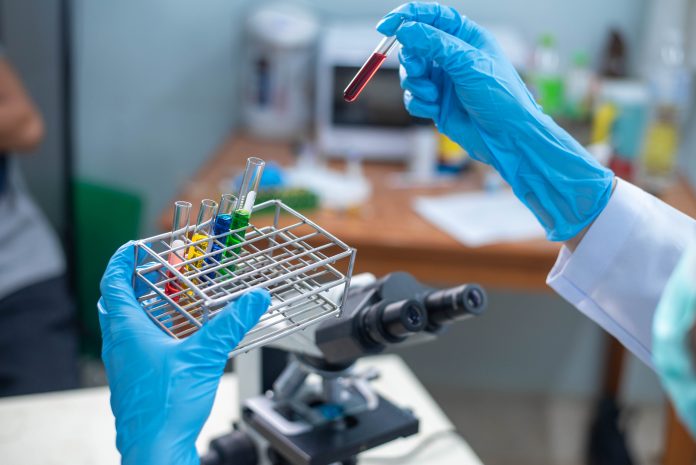Aarthi JanakiRaman, Research Director, Chemicals and Advanced Materials at TechVision, Frost & Sullivan, explains how glycoscience offers opportunities galore in healthcare
All multicellular organisms, including humans rely on carbohydrates for daily activities. Carbohydrates in the form of saccharides or sugars or glycans are stored in body cells and almost all functionalities of the organism, including ours, are dependent to a large extent on these glycans, making it an important field of study.
Glycoscience, which includes the research and study to understanding the role, structure, metabolism, interactions and functions of glycans is, therefore, an interesting field of study, irrespective of its complexity and diversity. Understanding the role and functionalities of glycans within carbohydrate-based medical research is expected to pave the way to a myriad of opportunities in the field of biomedicine, which is not surprising considering the impact of glycans and glycoconjugates in cellular functioning and interactions.
Glycans: Critical for human health
Glycans and glycoconjugates are considered essential for almost all bodily functions and play a crucial role in maintaining optimum health of the human body. They are essential for cell adhesion, cellular interactions and crucial for growth, development and functioning of any organism and essential for bodily functions to enumerate a few important ones. Sugars present in the cells also influence protein and gene expression and are considered vital in our body’s response to biological signals.
Glycans are also vital for our body’s immune system; they influence it to recognise the glycan sequences of various pathogens such as bacteria, viruses and fungi, thereby, triggering the immune response; they also play a key role in metabolic reactions and photosynthesis of various multicellular organisms.
Considering that these molecules help in myriad of functionalities, understanding them is critical to ensure good health and wellness.
Glycoscience: An integrated discipline cutting across chemical, biological and biomedical domains
Glycoscience has evolved from a study of sugar molecules to interdisciplinary research that is focused on understanding the complex structure and role of glycans and their application potential across industries, not limited to health and wellbeing. The study of glycans is faced with many challenges due to the complexity of its structure, sequencing and its widespread role in various metabolic activities. Glycans have the potential to act as building blocks for transitioning to a bio-based economy and also for renewable energy generation apart from its contribution in maintaining health and wellness.
Glycoscience research, therefore, has far-reaching effects, limited not only to healthcare, but also chemical & materials and energy industry, making it a classic example of an interdisciplinary field of study. Within healthcare, one of the key application areas is pharma applications, especially drug development.
Leveraging glycoscience in healthcare:
Glycans and glycoconjugates can be leveraged in major fields of healthcare, including drug discovery and development, immunology, diagnostics to name a few major ones. A few of the emerging opportunity areas include:
- The healthcare industry is transitioning towards personalised and precision medicine and glycans and glycoconjugates can play a significant role in the same. Considering the fact that glycans play a major role in the pathophysiology of all known major diseases and disorders, understanding their metabolic activity can help in developing targeted drug candidates that can be tailored to specific genotypes and phenotypes.
- Identifying and tracking glycan sequences in pathogens such as bacteria and viruses can help in the development of therapeutics.
- Tagging of interactions of glycan and glycoconjugates with other metabolites can also help in developing biomarkers for various diseases including tumours and diagnostic tools.
- Glycans and glycoconjugates can also help in developing vaccines against bacterial and viral infections and other diseases.
Need for an integrated approach to overcome challenges
Despite numerous opportunities across industries, glycoscience is still lagging behind other fields of science. Gaps in scientific knowledge, proven evidence related to the synthesis of glycans, availability of analytical and sequencing techniques that can help in accurately determining the structure and functionalities are key challenges that need to be addressed to help the research community to leverage glycoscience for R&D activities and product development.
There is also a need for establishing a supporting ecosystem that can help in the commercial-scale synthesis of glycans based on end-use application requirements. Some of the immediate action points include:
- Cost-effective toolkits for identification, sequencing and expression are available but not always accessible to all researchers.
- Availability of a centralised database with real-time updates related to information of genetic research related to glycan and glycoconjugate metabolism, activities of metabolic enzymes, sequencing and other pertinent data similar to that of microbiome or genome libraries is the need of the hour that can directly expand research efforts while ensuring knowledge transfer across the globe.
- Open-source software packages, molecular modelling and simulation tools that can annotate an entire glycan profile and virtually simulate glycan interactions with other molecules, enzymes, etc. can help understand the complexity of interactions and minimise R&D time, efforts and reduce the margin of errors.
- Advances in high throughput screening, sequencing and imaging can help in analysing structural details, and determine the metabolism, interactions of glycans and glycoconjugates in any given biological sample.
- The current production capacity is still lagging behind in terms of cost, efficiency when compared to that of yeasts and other bacteria, such as E. coli, hence the need for fully automated production and assembly systems similar to that proteomics. Obtaining regulatory approval for the production system is also vital to reduce time to market.
The final word on glycoscience
It’s evident that the field of glycoscience has a myriad of opportunities. Integrating glycan research with the ongoing human genome and proteomic research activities across the globe instead of one-off research activities can help in realising the benefits of integrated omics research and developmental efforts. A collaborative approach between stakeholders across academia, industry participants, governmental and non-governmental funding agencies, regulatory and standardisation bodies are also key to realise the full potential of glycans and glycoconjugates in industrial, commercial and healthcare applications.










